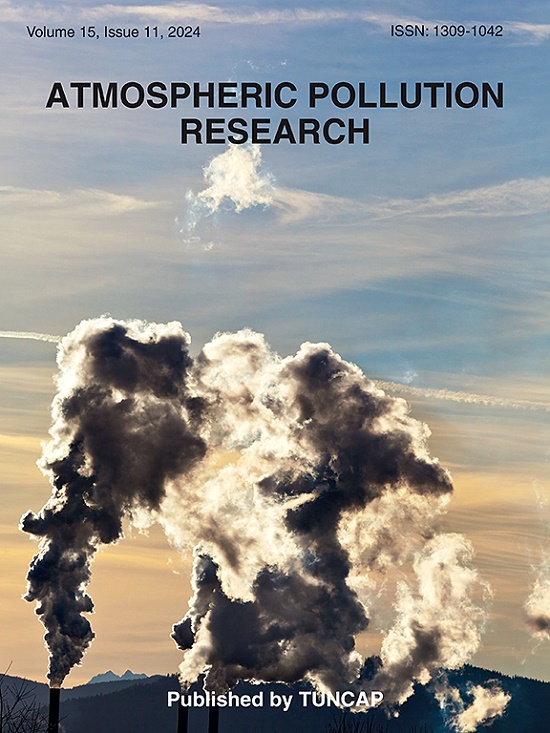Identification of aerosol and meteorological parameters threshold for visibility conditions over Delhi city
IF 3.9
3区 环境科学与生态学
Q2 ENVIRONMENTAL SCIENCES
引用次数: 0
Abstract
The quantitative assessment of air pollution induced visibility impairment is a prevalent concern across Indian sub-continent. In present study, efforts have been made to identify thresholds of aerosol (PM2.5), meteorological variables (relative humidity, temperature at 2 m, wind speed at 10 m) and boundary layer for shallow (Category (CAT) I: 550–1000 m), moderate (CAT II: 300–550 m), dense (CAT IIIA: 175–300 m & CAT IIIB: 50–175 m) and very dense (CAT IIIC: <50 m) fog categories. A 5-year dataset from 2018 to 2023 for wintertime (December–February) is used to determine thresholds using statistical methods. A unique two-way rolling window correlation analysis is performed for linear, inverse and logarithmic functions considering described visibility classes, PM2.5, RH and temperature. Different sliding windows and subsequent step sizes are taken to ascertain interrelatedness based on significant correlation coefficients. Further, a frequency distribution based averaging method is used for wind speed and boundary layer thresholds. Based on the findings, identified thresholds for PM2.5, RH, temperature, wind speed and boundary layer are >270 μg/m3, >70%, <13 °C, <1.5 m/s, <100 m for CAT I; >250 μg/m3, >70%, <13 °C, <1.2 m/s, <80 m for CAT II; >250 μg/m3, >70%, <11 °C, calm winds, <80 m for CAT IIIA; >220 μg/m3, >80%, <11 °C, calm winds, <70 m for CAT IIIB while 180 μg/m3, >90%, <9 °C, calm winds and <60 m for CAT IIIC. The determined thresholds have been validated using 2023–2024 data based on which shallow, moderate, dense and very dense categories are found to be 65%, 77%, 88%, 90% and 93% compliant with the thresholds of CAT I, CAT II, CAT IIIA, CAT IIIB and CAT IIIC. Trajectory clustering is also included for ascertaining the potential pollution source regions. The study can aid policymakers in predicting fog events. Moreover, appropriate policy interventions can be formulated in wake of the early warning system and information dissemination.

求助全文
约1分钟内获得全文
求助全文
来源期刊

Atmospheric Pollution Research
ENVIRONMENTAL SCIENCES-
CiteScore
8.30
自引率
6.70%
发文量
256
审稿时长
36 days
期刊介绍:
Atmospheric Pollution Research (APR) is an international journal designed for the publication of articles on air pollution. Papers should present novel experimental results, theory and modeling of air pollution on local, regional, or global scales. Areas covered are research on inorganic, organic, and persistent organic air pollutants, air quality monitoring, air quality management, atmospheric dispersion and transport, air-surface (soil, water, and vegetation) exchange of pollutants, dry and wet deposition, indoor air quality, exposure assessment, health effects, satellite measurements, natural emissions, atmospheric chemistry, greenhouse gases, and effects on climate change.
 求助内容:
求助内容: 应助结果提醒方式:
应助结果提醒方式:


